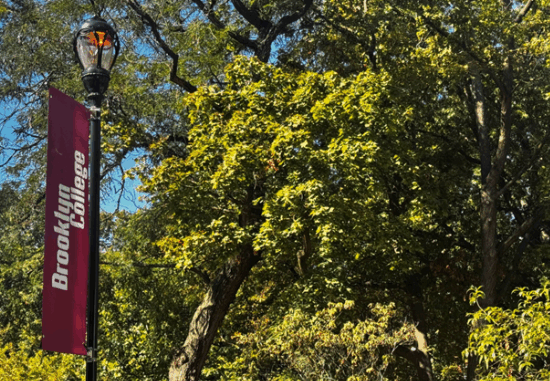
BY KAILA MACEIRA
On October 5, Brooklyn College students, faculty, staff, and community members took part in the first Tree Mapping Party, counting and recording trees on campus, as part of an effort to make the city grow greener, become cooler, and sustain itself for New Yorkers of all backgrounds. The project supports Forest for All NYC, a program that aims for double the canopy cover on New York City’s five boroughs. The participants help track the health of New York City’s trees through observation.
After they met at Tow Center for the Performing Arts, the participants grouped themselves and identified trees to collect data and calculated their ecological benefits, also they discussed their history on campus because Brooklyn College was founded.
Professor of environmental ethics and philosophy Mike Menser, who co-chairs the college’s Sustainability Council, said the inventory gave students a way to connect environmental study with community action. “It’s a profound way of building a relationship with our environment through trees,” said Menser, at the launch of the inventory. “They’re keystone species that sustain everything around us, and by mapping them, we learn to see them as both living beings and necessary infrastructure.”
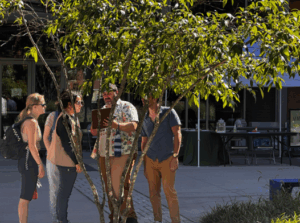
Student leader Carina Alessandro is an Urban Sustainability major, who also has a concentration in Environmental Economics. She said her interest in sustainability grew from childhood recycling, and she later developed an interest in climate change. Alessandro’s capstone project provided the basis for the college tree inventory; she was influenced by Forest for All NYC and the City Parks Foundation tree census of New York City.
Alessandro said her capstone team looked at how other campus communities have completed tree inventories and what tree data would be most useful for urban forestry. They were producing the groundwork for Brooklyn College’s mapping project with this information. She has kept developing it within an independent study of environmental democracy.
Alessandro underscored her point by referencing the Environmental Democracy Index, which defines environmental democracy as “the idea that meaningful public participation is critical to ensure that land and natural resource decisions adequately and equitably address citizens’ interests.”
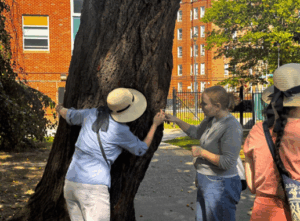
Around 15 percent of Brooklyn College’s land cover is tree canopy cover, one of the highest percentages of any CUNY campus, although still less than the 30 percent goal of the Forest for All NYC project. Alessandro said the new inventory data will show not just which trees need attention, but also where planting new trees will be most effective. Monitoring canopy density and health creates an established baseline of conditions that allows long-term management of the college’s green spaces to reduce heat, flooding, and pollution common in an urban area.
Trees can be the biggest asset. They cool buildings and reduce energy costs in the summer. Healthy trees and landscaping can increase property values and improve the impression visitors get of campuses upon arrival. At the same time, trees capture carbon dioxide, absorb pollution, and reduce stormwater runoff.
This saves money, which would otherwise go into expensive infrastructure costs and clean-up. “Environmental benefits can usually be translated into economic ones,” Alessandro said, for the data could allow the college to quantify that savings.
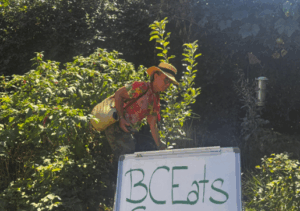
Participants took the inventory. Then they enjoyed food and beverages with ingredients grown on campus in the BC Eats Garden. Offered fresh oregano from the BC Eats Garden for sprinkling on pizza and homemade zucchini bread from zucchini that was also grown on campus. They pressed fresh apple cider on site, and attendees reflected on the day’s work and the future of sustainability at Brooklyn College.
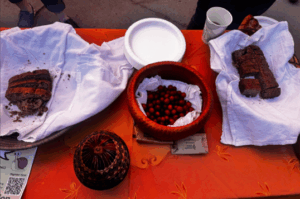
Menser closed by explaining that the next step would be to organize it and build a foundation for future work. He also invited people to attend a panel discussion on October 22 at Brooklyn College, titled “What Climate Action Do We Want from the Next Mayor of NYC?” The event features Public Advocate Jumaane Williams, Southeast Brooklyn CDC executive director Rona Taylor, NYPIRG, and BC’s Urban Sustainability Program.
